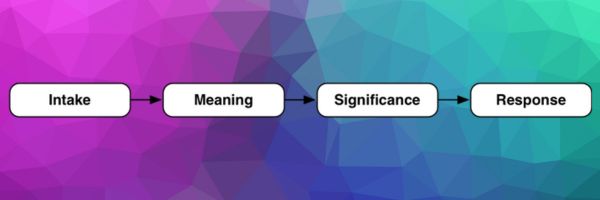
Solving Communication Problems
During my first visit with a new client, Doug, the VP of Engineering said, “Don, if we don’t get a handle on quality, it’s going to kill us. For every story we released into production, there was a new defect logged.”
I often find that what I need to know to solve a problem is not explicitly stated. I used to find myself chasing thoughts and spending time and effort on dead end paths.
Communication is a complicated process. My favorite model for checking the process is the Satir Interaction Model. This model breaks communication into four steps: Intake, Meaning, Significance, and Response.
![]()
We tend to think of communication in terms of words and tone. Intake includes the whole environment. We were in Doug’s office. The door was closed. He was the VP of engineering. I was a coach/consultant they hired to help them solve this problem.
I make Meaning based on my Intake. The data arriving during the Intake step have no meaning until I assign them meaning. The Rule of Three applies here: If you can’t make three different meanings from your Intake, you might be stuck in a habitual thought pattern. I could decide Doug was setting me up for blame when quality didn’t improve. Maybe Doug was worried about his next quarterly bonus. Perhaps Doug was giving me license to go, look, and make recommendations on what I discovered.
Significance is how the Meaning impacts us; our emotional reaction to it. This allows us to filter Intake and Meaning so we don’t get bogged down in all the sensory input. If there’s not emotional response (significance) we simply move on. With the license Doug gave me, I felt there was a good chance of success and I was excited to work on the problem.
Response is what we do in reply or reaction to the Intake -> Meaning -> Significance. We might take action, perhaps offer suggestions and ideas, or ask a question which restarts the process. In this instance, I asked more questions. Did every story have a defect? No, the numbers just happened to be equal. Where teams cross functional? Yes. How many teams? Five. Four worked on one product, the fifth had a related but separate product dedicated to single client. And so on …
The Satir Intake Model keeps me aware of how good communication works. Using the Interaction Model slows my thinking down allowing me to be more deliberate and precise in my communication.
Join us in the PSL workshop to learn more and practice applying the Satir Interaction Model.
by Don Gray